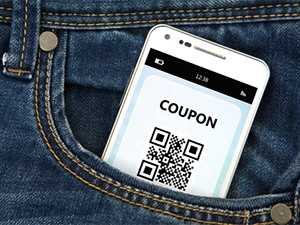
Local search and discovery apps will generate revenues of $12.2 billion annually in 2020, up from an estimated $3.4 billion in 2016 due to the emergence of proximal wireless technologies, such as LTE-Direct, Bluetooth, ultra-wide band (UWB), WiFi fine timing measurement (WiFi FTM).
This is according to Juniper Research's recent report, which notes these technologies will be particularly relevant in indoor settings, where a range of new services can be offered to the end-user.
The report says retailers are rapidly deploying Bluetooth beacons in the first instance in order to develop proximity marketing services.
These, combined with asset tracking technology, allow retailers to develop personalised offers based on real-time stock levels.
Juniper expects retailers to spend $2.4 billion annually on beacons and asset tracking in 2020.
Research firm TechNavio estimates the global enterprise location-based service (LBS) and advertising market is projected to grow at a compound annual growth rate of 30.22% to reach USD 7.6 billion by 2020.
Location-based advertising contributes the majority of the revenue to the global enterprise LBS market, and it is expected to sustain this trend over the forecast period.
According to Rakesh Kumar Panda, a lead analyst at Technavio for M2M and connected devices, advertisers send targeted advertisements to smartphone users based on their locations.
"Enterprises, retail outlets, and restaurant owners find this medium convenient to advertise their products, as it enables them to reach their customers efficiently and at a low cost. In addition, consumers benefit from receiving the best offers while making purchases."
Meanwhile, WiFi FTM and UWB, both expected to proliferate from 2017 onwards, will provide solutions for highly accurate positioning indoors, says Juniper Research.
Juniper Research senior analyst Steffen Sorrell says precise positioning will be the hook for many indoor location services.
He believes it will provide new opportunities for brands, where virtual store assistants or shelf-level product finding are delivered directly to the mobile screen.
Additionally, the report notes the commercialisation of LTE-Direct will be an exciting prospect for vendors and end-users alike. As a proximal discovery technology, listening devices will be able to receive offers, news or be notified of events within the vicinity, dramatically widening the scope for proximity communications, it adds.
As the mobile advertising landscape matures, the simple geo-fence is being usurped by contextual data such as a user's interests, real-time location and even political leanings, says Juniper Research.
Social applications are providing a highly accessible pool of rich user data for advertisers, it adds.
Share